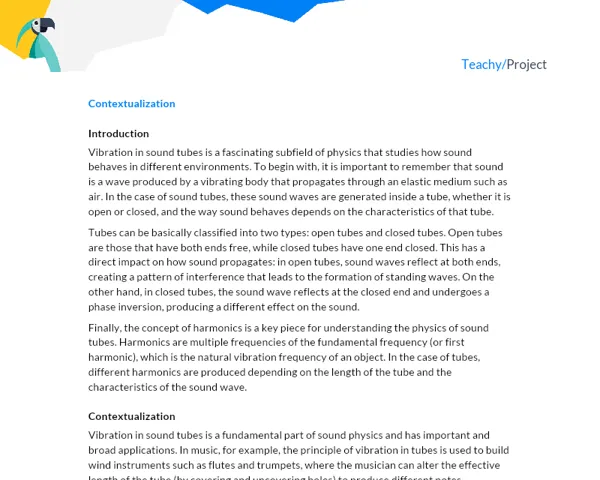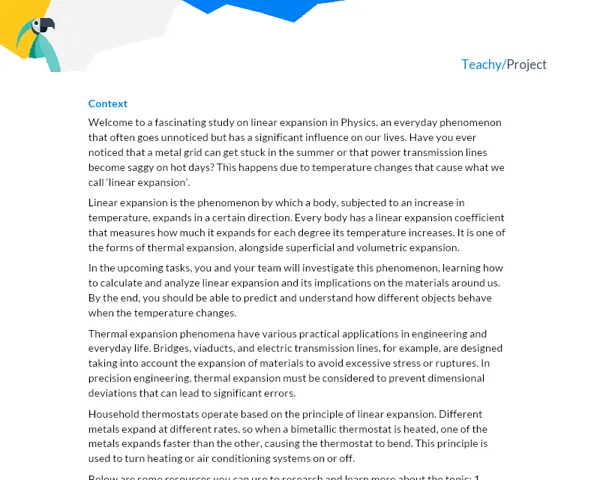Context
Newton's first law, also known as the law of inertia, is one of the fundamental concepts of physics. It describes the behavior of objects at rest or in motion when no external force is acting on them.
This law states that an object at rest will remain at rest and an object in motion will continue at a constant velocity unless acted upon by an external force. This may seem quite obvious nowadays, but in Newton's time, this idea contradicted the common belief that an object in motion would naturally slow down and stop without the continuous application of a force.
This concept is essential for understanding how and why objects move the way they do, whether in everyday life - like a ball rolling on a soccer field - or on a cosmic scale, like the Earth moving around the Sun.
Importance of the Concept
Understanding Newton's first law is not only important for comprehending more complex physical theories, but it also has practical implications in the real world. For example, it is because of this law that we know when a car brakes suddenly, the passengers are thrown forward. Similarly, it is Newton's first law that explains why astronauts float in a spacecraft when they are outside the gravitational influence of the Earth.
Practical Activity: "Newton's Race - The Inertia Race"
Project Objective
To experiment and illustrate, in a playful and practical way, Newton's first law, giving students a better understanding of the concept of inertia and its practical implications in everyday life. Additionally, the project aims to promote teamwork and the application of theoretical knowledge in a practical environment.
Detailed Project Description
Students will be divided into groups of 3 to 5 participants. Each group will be responsible for designing and building a race car powered by inertia. The goal is for the car to travel the longest distance possible after being released from an inclined ramp, without the application of any external force during its movement.
Students should apply their understanding of Newton's first law, considering factors such as the weight of the car, the material of its wheels, friction with the ground, and the shape of the vehicle. The objective is to minimize factors that may work against inertia, allowing the car to continue moving for the longest time possible.
Required Materials
- Materials for building the race car (wood, plastic, cardboard, etc.)
- Construction tools (glue, scissors, tape, etc.)
- Race ramp (can be a simple piece of wood supported by a chair)
- Tape measure to measure the distance traveled by the cars
Step-by-Step for Activity Execution
- Gather your group and discuss the concepts of Newton's first law, particularly inertia. Plan how you can build a car that maximizes the use of this law.
- Design a project for your car. It should be simple but effective. Remember that you want the car to keep moving for the longest time possible after being released on the ramp.
- Gather the necessary materials and build your car. Be creative and try different materials and designs.
- Test the car and adjust the design as needed. Remember that the goal is to travel the longest distance possible.
- When you are satisfied with the car's design, it's time for the race! Mark the distance traveled by the car after being released from the ramp.
- All groups will present their cars and the results obtained. Together, discuss your experiences and what you learned from the project.
Project Deliverables and Written Document Development
After completing the practical part of the project, each group must write a detailed report. The report should follow the structure of Introduction, Development, Conclusions, and Bibliography used.
- Introduction: Provide context for the law of inertia and its significance. Describe the project's objective and why it is important to understand these concepts.
- Development: Describe the process of creating the race car, the materials used, and the modifications made. Include the theory behind the decisions taken and how Newton's first law applies at each stage. Present and discuss the results obtained.
- Conclusions: Summarize what was learned during the project. Discuss whether the final result was as expected and what you would do differently if you were to redo the project.
- Bibliography: List the sources of information used for research and project development.
Remember that the report should demonstrate the group's understanding of Newton's first law and its practical application. It should also show the group's ability to work as a team, manage their time, and solve problems creatively and proactively.



